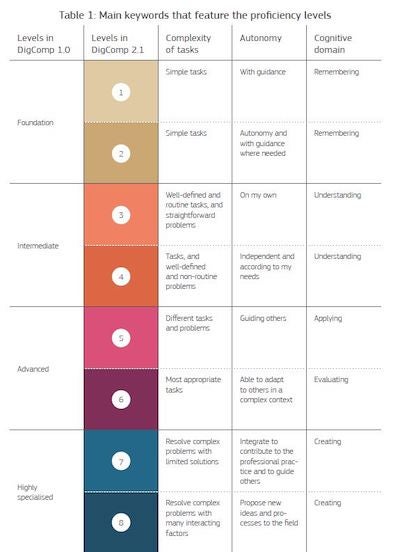 Dans un monde bouleversé par la pandémie de COVID-19, une hausse des investissements consentis pour aider les travailleurs de la région MENA à s’adapter à cette nouvelle donne serait une nouvelle pierre apportée à la transformation numérique.
Dans un monde bouleversé par la pandémie de COVID-19, une hausse des investissements consentis pour aider les travailleurs de la région MENA à s’adapter à cette nouvelle donne serait une nouvelle pierre apportée à la transformation numérique.
Management thinker Peter Drucker is famously quoted as saying, "You can't manage what you can't measure." Drucker’s axiom embodies the recent spike in efforts to define, measure and assess digital skills — steps essential toward building and managing a digitally skilled workforce.
As the pace of digital transformation in the Middle East and North Africa (MENA) speeds up, workers and entrepreneurs increasingly need digital skills to succeed in an evolving marketplace. A common starting point for most policy makers is to identify frameworks that can be used to measure these skills.
In our first blog of this series, we introduced an emerging definition of digital skills as basic, intermediate and advanced. The discussion has also expanded to broader workplace competence, combining skills with knowledge, attitudes, and other factors.
The competency landscape has proliferated with frameworks. These, in turn, are being used to develop training materials to:
- Find new ideas for working with — or thinking critically about — digital technologies
- Conduct self-assessments by workers
- And find language to describe those skills to different audiences, including future employers.
Multiple competency frameworks have surfaced in public and private sector organizations. Some are employee-oriented, while others focus on K–12 students, and may see increased uptake due to the COVID-19 pandemic. Emphasis is rising on remote learning anyway. IT industry-oriented frameworks and their certifications could also see more takers because of the need for remote working, and for more digital jobs, during the pandemic response.
Common to most frameworks are the basic digital literacy skills needed by a general audience. These skills include knowing how to operate devices, as well as communicating, finding or sharing information, creating basic content, using everyday software (for word processing or spreadsheets), practicing safety and privacy habits, or solving simple problems.
Some skills are child’s play, others not
Lego and Code.org target K-12 students and emphasize coding, while Google’s framework includes digital entrepreneurship skills, such as online marketing and e-commerce. At the more advanced end of the spectrum, SFIA, EU e-Competency, and various industry and vendor certifications (Apple, Linux+, Microsoft, Oracle) are considered likely by IT professionals to be needed in digitally intensive jobs.
As well as the ITU Digital Toolkit, the DigComp framework 2.1 is being adopted the most in the World Bank, our partners, and other multilateral organizations. With its emphasis on developing the skills needed for the larger share of the global labor market, this framework is arguably the most relevant to our clients in MENA.
The DigComp 2.1 framework is organized around five competency areas: information and data literacy, communication and collaboration, digital content creation, safety, and problem solving. It sets out eight proficiency levels for each area and gives examples of their application and use in both employment (including job seeking) and learning.
An example of a lower-level digital skill in the DigComp 2.1 framework would be, "Layla can identify how and where to organize and keep track of job ads in a job app on her smartphone in order to retrieve them when she needs them." At level 5, an employment example of proficiency would be one’s ability to "use a programming language (e.g. Ruby, Python), to provide instructions to develop an educational game to introduce a new procedure, and to resolve issues such as debugging a program to fix problems with code."
To display the most specialized advanced proficiency, level 8, an employee would be able to "create an illustrated video which answers questions on the sustainable use of digital devices in organizations of a sector, to be shared on Twitter, and to be used by staff and by other professionals in the sector."
In MENA, Ministries of Education and their private sector partners are working toward leveraging these frameworks to identify gaps in existing curricula and initiate reforms to include teaching of better digital skills. For example, in Jordan, the Ministry of Education worked with Injaz to map how its computer science curriculum compared to UNESCO’s Digital Literacy Global Framework and the DQ:Digital Intelligence Framework. This will help design policy, with World Bank support, to reform what digital skills public schools offer students.
Increasing investments to help MENA’s workforce adapt to the COVID-19 world would also help contribute to digital transformation. Commonly accepted frameworks will allow us to ensure that interventions are designed for the people they serve, including K-12 students, citizens and professionals.
Success will require a multi-stakeholder approach. Shared competency frameworks will help make that possible.





Join the Conversation